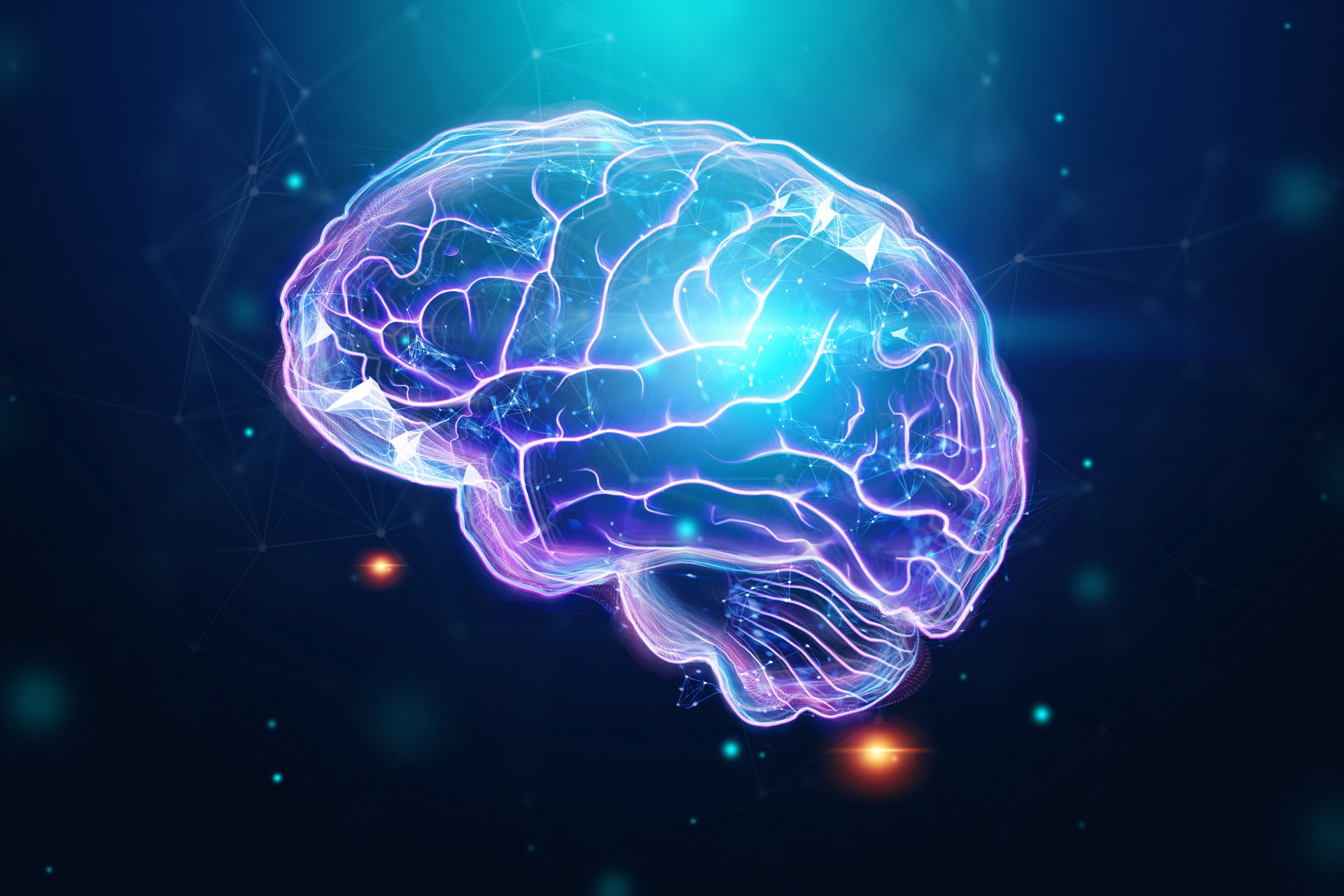The 10 Most Common Brain Disorders: What Causes Them What to Look For
Brain disorders, also known as neurological disorders, are a number of conditions that occur due to disconnect or desynchronization between the brain and body. Some of the most common brain disorders include anxiety, depression, tinnitus, brain fog, migraines, IBS, and more.


Brain disorders, also known as neurological disorders, are a number of conditions that occur due to disconnect or desynchronization between the brain and body. Some of the most common brain disorders include anxiety, depression, tinnitus, brain fog, migraines, IBS, and more.
Brain disorders are an extremely complex set of conditions estimated to affect up to 1 billion people worldwide, making it one of the most common disorders in our modern times. While many tend to think of a disorder as a disease, as these words are often used interchangeably, the truth is that disorders are much more common than diseases.
While diseases are classified medical conditions with identifiable and measurable causes, disorders are diagnosed based on symptoms that impact the body’s ability to function normally.
From anxiety and depression to tinnitus, migraines, and even IBS, brain disorders are much more common than many realize. But why are they affecting so many people, and what can we do about it?
Keep reading to learn more about brain disorders, including what causes them, which disorders are the most common, and what you can do if you have a brain disorder that’s impacting your quality of life.
What Is a Brain Disorder?
Also known as a neurological disorder, a brain disorder is a condition that disrupts the normal functioning of the brain due to disconnect or desynchronization between the brain and body. It’s often caused by a genetic weakness, injury, infection, emotional trauma, or any combination of these factors that leads to the brain and body falling out of rhythm or sync.
In fact, common brain disorders such as Alzheimer’s disease, anxiety, and more are often referred to as forms of oscillopathy due to the fact that the oscillation of the brain’s waves are out of sync.
Interestingly, different brain disorders can cause a variety of symptoms unique to each person. Let’s take a closer look at the 10 most common brain disorders, including what they are and the top symptoms of each.
The 10 Most Common Brain Disorders
Brain disorders can affect people of all ages and backgrounds. Here are some of the most common conditions:
1. Anxiety
Anxiety often presents in the form of intense worry, fear, or unease. And a certain amount of anxiety is normal and even healthy. But when it becomes persistent and excessive, interfering with daily activities, this is usually a sign that you may be experiencing generalized anxiety disorder.
Causes of anxiety disorders can include genetic factors, traumatic experiences, or certain imbalances in the chemicals in your brain chemicals. Therefore, common treatment methods often include therapy and medications, such as selective serotonin reuptake inhibitors (SSRIs) or benzodiazepines, which are designed to help regulate brain chemicals.
While this is a decision between you and your doctor, it’s important to note that anxiety disorders are known to be associated with abnormal network oscillations in the brain, meaning neural oscillation rhythms being out of sync. As a result, it’s ideal to resync these rhythms, and getting to the root of the problem requires stimulating certain regions of the brain with normal rhythms.
This is done through movement, exercises, and/or functional neurological therapies such as specific eye movements, vestibular stimulation, electrical device stimulation, cold laser therapies, and neurofeedback, all of which have been scientifically shown to develop stronger circuits in the brain and empower its ability to oscillate in rhythm.
2. Depression
Depression is a brain disorder though more commonly known as a mood disorder that’s characterized by persistent feelings of sadness. Symptoms include loss of interest in activities, changes in appetite and/or sleep patterns, and difficulty with concentration. It’s often rooted in genetic and environmental factors, such as neurotransmitter imbalances or life events, and leaves those with depression feeling like all is hopeless.
As with anxiety, common treatments for depression include therapy, such as cognitive-behavioral therapy, and medications, when needed. However, given unwanted side effects, many people with depression have shown interest in other treatment options, such as helping the body improve functional balance through improving neurotransmitter production in the brain. This is done through testing your urine for neurotransmitter imbalances in order to find the source of the problem and working to resolve the root cause.
3. IBS
IBS, or irritable bowel syndrome, is a well-known and rather common gastrointestinal disorder that affects the large intestine. In fact, it impacts up to 15 percent of all Americans. But did you know it’s also a brain disorder?
While the most common IBS symptoms include abdominal pain, bloating, diarrhea, and/or constipation, the truth of the matter is that IBS is rooted in the brain. Interestingly, research has shown that 40 percent of all people with IBS have white matter lesions on their brains. This is an important finding because lesions appear due to inflammation and nerve deformation. Just as IBS, an inflammatory syndrome impacts the brain due to systemic inflammation, the brain can impact your gut health. In fact, given the knowledge that IBS flares typically concur with periods of emotional stress, it’s not surprising to learn that what causes IBS issues is a disconnection or disruption in the synchronization of your brain and gut.
Typical irritable bowel syndrome self-care options include dietary changes, stress management, and perhaps even medication (and some of those options are must-dos). But because your gut has a direct line of communication with your brain via the bidirectional communication network known as the gut-brain axis, it’s critical to ensure your gut and brain are in sync. To do this, prioritize your gut health and ensure appropriate digestion by consuming good food combinations for detoxification, avoiding inflammatory foods, and eating at the same times each day.
4. Vertigo
Sometimes referred to as chronic dizziness, vertigo is a sensation of spinning or dizziness. It can be triggered by issues in either your inner ear or your brain, and vertigo causes imbalance, nausea, and difficulty focusing.
Conventional treatment options for vertigo may include medication, physical therapy, or surgical intervention in severe cases. Interestingly, research published in the journal Synapse has shown that certain exercises known as vestibular rehabilitation exercises can help your brain adapt and compensate for the inner ear dysfunction causing vertigo. These exercises include head-eye movements with different body postures and activities with the goal of maintaining balance with different orientations of your head and body. You may also perform various upper-extremity tasks, repeating the movements provoking vertigo to help your brain and body resync.
5. Tinnitus
Tinnitus is the perception of hearing a sound in your ears, such as ringing, buzzing, or clicking, without an external source causing the sound. It can be caused by many factors, such as age-related hearing loss, exposure to loud noises, or underlying medical conditions.
Living with tinnitus can be quite distressing because the constant presence of noise can interfere with your ability to concentrate and even have a good night’s sleep. This often leads many sufferers to wonder how to stop tinnitus and fast. While common treatment options focus on managing symptoms, addressing the underlying cause in an expeditious manner is most effective. Here’s why: The longer tinnitus lasts, the more constant the ringing can become and finding a true resolution can become difficult.
As a result, it’s important to work with a chiropractor to pay attention to your neck, jaw, and cranium immediately after you begin to experience tinnitus and specifically focus on the area where your neck meets your head.
There are many structures influencing the covering of your brainstem where your vestibulocochlear nerve (which carries the sound) pierces into your brainstem. As it pierces your brainstem, your nerve can become torqued and compressed by the dura mater. The muscles surrounding your jaw and upper cervical and occipital musculature tension heavily influence this junction where your nerve leaves your skull and enters your brainstem.
Without physically decompressing the nerve through offloading by mobilization of this soft tissue tension, you can’t achieve appropriate blood flow and nutrient delivery to this nerve and the inferior colliculus (a brainstem nucleus for sound perception). As a result, the nerve function will deteriorate. This is why you must treat the physical compression with good manipulation of upper cervical spine joints, the temporomandibular joint, and cervicocranial junction to relieve ringing in your ears.
6. Brain Fog
Brain fog is a term used to describe a brain disorder that causes problems with concentration and memory along with mental fatigue. It can be caused by a variety of factors such as sleep deprivation, stress, hormonal changes, or certain medications. But, ultimately, brain fog results from a lack of activation and connection between the frontal lobes of your brain and body awareness. This means that, once again, we have a brain disorder directly linked to an asynchronization between the brain and body.
Common treatment options for brain fog include lifestyle changes, stress management techniques, and improving sleep quality. But one overlooked area for those wanting to know how to get rid of brain fog is calibrating the connection between your brain and body. In fact, one of the best ways to combat brain fog is to pay attention to your neck and cervical spine. Improving blood flow and cerebrospinal fluid to your brain is critical for improving brain fog. Personally, I’ve found that performing a message with MindFlo Salve is incredibly effective at improving blood flow and, as a result, cognitive function.
7. Migraines
Migraines are a type of common severe headache often accompanied by throbbing pain, nausea, and sensitivity to light and/or sound. They affect 12 percent of all people ages 12 and older in the U.S. and are three times more common in women than in men. At their worst, they can be debilitating and significantly impact your daily life. Though they have various triggers, migraines are often linked to hormonal changes, eating certain foods, or other environmental factors.
Conventional treatment options for migraines include medication, lifestyle changes, and identifying and avoiding triggers. But synchronizing your brain and body is a critical treatment for those desperately wondering how to get rid of a migraine.
Here’s why: The pain from a migraine occurs due to stress causing inflammation in the nerves that provide sensation to your head. By removing the inflammation in these nerves through improved blood flow and muscle relaxation, you can eliminate the root cause of the pain. Depending on the cause of the inflammation, this can be done by a variety of methods, including applying heat at the base of your skull, using an herbal salve, or even getting a chiropractic adjustment. These methods help to send a signal to your brain that the nerves are no longer inflamed, allowing the pain to resolve.
8. Alzheimer’s Disease
Alzheimer’s disease is a progressive brain disorder that causes memory loss. Additional symptoms of Alzheimer’s disease include confusion and changes in behavior. Currently, it is the most common cause of dementia and primarily affects older adults. Though the exact cause of Alzheimer’s disease is not fully understood, it’s well established that there are both hereditary and environmental components.
While you can’t control your genetics, the great news is that you can take certain steps to protect your more vulnerable genes. And this is an important step for anyone interested in how to prevent Alzheimer’s disease.
You may be surprised to learn that the development of Alzheimer’s disease is linked to high blood sugar and insulin resistance, poor diet, poor exercise, and high uric acid — all controllable factors. Therefore, preventing Alzheimer’s disease requires attention to your blood quality, body movement, brain stimulation, and mental resilience to life stressors. Fortunately, supporting healthy blood sugar levels, cooling inflammation, and reducing uric acid in the blood can be done by consuming an anti-inflammation diet rich in vitamin C and other phytonutrients.
9. Parkinson’s Disease
Parkinson’s disease is a progressive brain disorder that primarily impacts your movement. Symptoms of Parkinson’s disease include tremors, stiffness, and imbalance. It’s been well-established that Parkinson’s disease is caused by a loss of dopamine-producing cells in the brain that occurs due to hereditary and environmental factors.
Just as with Alzheimer’s disease, there isn’t much you can do to change the genetic hand you were dealt. But recalibrating your body and strengthening the rhythm between your brain and body is a great first step. In fact, research has shown that a lack of calibration and movement can actually worsen Parkinson’s disease symptoms!
Likewise, engaging in coordinated exercises such as boxing or martial arts has been shown to help those with Parkinson’s disease because sequencing movements and connecting with a target upregulate dopamine receptors in the whole brain.
10. Autonomic Dysfunction
Autonomic dysfunction, also known as an autonomic nervous system disorder or dysautonomia, is a brain disorder that causes a dysregulation or desynchronization between the brain and autonomic nervous system (the system responsible for many of your involuntary bodily functions, such as your heart rate, blood pressure, respiration, and digestion). Symptoms of autonomic dysfunction include dizziness, fainting, irregular heartbeat and tachycardia, and difficulty regulating your blood pressure.
While causes of autonomic disorder can vary and include diabetes, autoimmune diseases, concussions, COVID, and genetic factors, improving your autonomic function is achievable. In fact, the only strategies known to address the root cause of autonomic dysfunction are specific functional neurological exercises and graded interval exercises (the latter of which was developed by concussion researchers to help concussion patients return to normal daily function).

More on Brain Disorders: Risk Factors & Diagnostic Process
While brain disorders can affect anyone, certain risk factors may increase the likelihood of their development. These risk factors include age, family history of brain disorders, exposure to toxins, head trauma, and certain medical conditions. Interestingly, you may be surprised to learn that experiencing a concussion is linked to all 10 of the most common brain disorders!
How? Consider this: A concussion occurs with a whipping motion of the head and neck, often resulting in an impact to the head. When the head and neck experience an acceleration and deceleration, the soft tissues underneath, such as the brainstem and cerebellum, get sheared. This damages neurons in these tissues, which causes a disconnection in signals from the brain to the body and knocks the brain out of sync.
Different symptoms will occur depending on the pathways that were disrupted. It could be autonomic dysfunction if the upper brainstem takes the brunt of the impact or it could be brain fog, dizziness, or poor coordination of thoughts if the cerebellar coordinator is damaged.
Depending on your risk factors and symptoms, your diagnostic process may include a combination of medical history analysis, physical examinations, imaging tests, and psychological evaluations. The specific tests you undergo will depend on the suspected condition and the symptoms you’re experiencing.
At The Dearing Clinic, we know that in order to understand exactly how to strengthen an injured brain, first we need to measure the function of the brain. When you think of a concussion, you might think of a cognition test as that’s the standard in neurology and orthopedics. While we conduct cognition tests for our patients, the most important markers of injury and eventual improvement are seen in the delicate pathways involved in eye movements.
Balance and autonomic function are measured with posturography and heart rate variability respectively. These markers, especially eye movements, tell us the story of the brain’s health through its functional output.
We can also measure brainwave balance and oscillation through qEEG. This provides a picture to view how well each region of the brain’s cortex is organized and allows us to match brain function with brainstem function and map out a personalized treatment plan.
Key Takeaways
- Brain disorders are a number of conditions that occur due to disconnect or desynchronization between the brain and body. They’re quite common, affecting up to 1 billion people around the world.
- Some of the most common brain disorders include anxiety, depression, IBS, vertigo, migraines, and more.
- Risk factors include your age, family history, exposure to toxins, head trauma, and certain medical conditions. One of the most significant risk factors is experiencing a concussion.
- Depending on your personal situation, the diagnostic process may include a combination of medical history analysis, physical examinations, imaging tests, and psychological evaluations. Contact The Dearing Clinic to learn more about what to expect and how you can reclaim your life.
Ready to feel like you again?
* Your next step toward feeling better starts today. At The Dearing Clinic we make it simple to get started with care that truly fits your life. Book your visit now and let’s design a plan that restores your energy, relieves your pain, and helps you enjoy more of what matters most.


